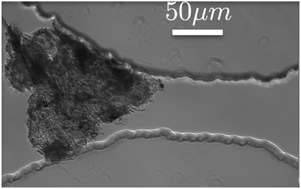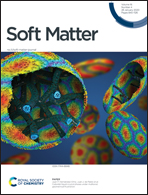Clogging of microfluidic constrictions by monoclonal antibody aggregates: role of aggregate shape and deformability†
Abstract
The formation of aggregates in solutions of monoclonal antibodies is difficult to prevent. Even if the occurrence of large aggregates is rare, their existence can lead to partial or total clogging of constrictions in injection devices, with drastic effects on drug delivery. Little is known on the origin and characteristics of such clogging events. Here we investigate a microfluidic model system to gain fundamental understanding of the clogging of constrictions by monoclonal antibody aggregates. Highly concentrated solutions of monoclonal antibodies were used to create protein aggregates (larger than 50 microns) using mechanical or heat stress. We show that clogging occurs when aggregates reach the size of the constriction and that clogs can in some cases be released by increasing the applied pressure. This indicates the important role of protein aggregate deformability. We perform systematic experiments for different relative aggregate sizes and applied pressures, and measure the resulting flow-rate. This allows us to present first in situ estimates of an effective Young's modulus. Despite their different shapes and densities, we can predict the number of clogging events for a given constriction size from the aggregate size distribution measured by Flow Imaging Microscopy (MFI). In addition our device can detect the occurrence of very rare big aggregates often overlooked by other detection methods.



 Please wait while we load your content...
Please wait while we load your content...